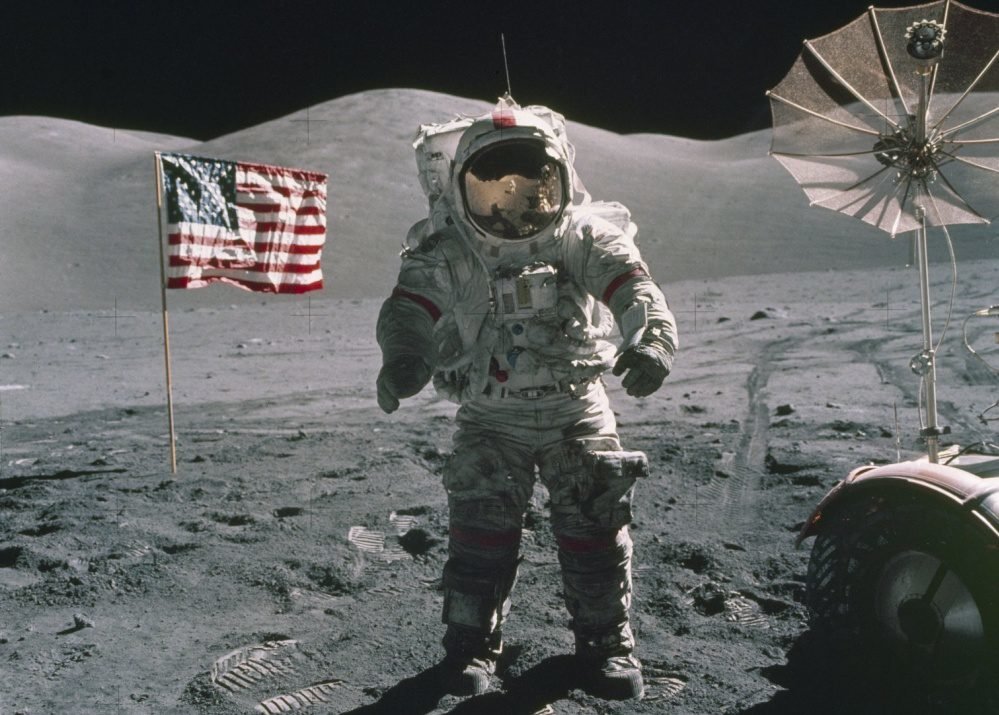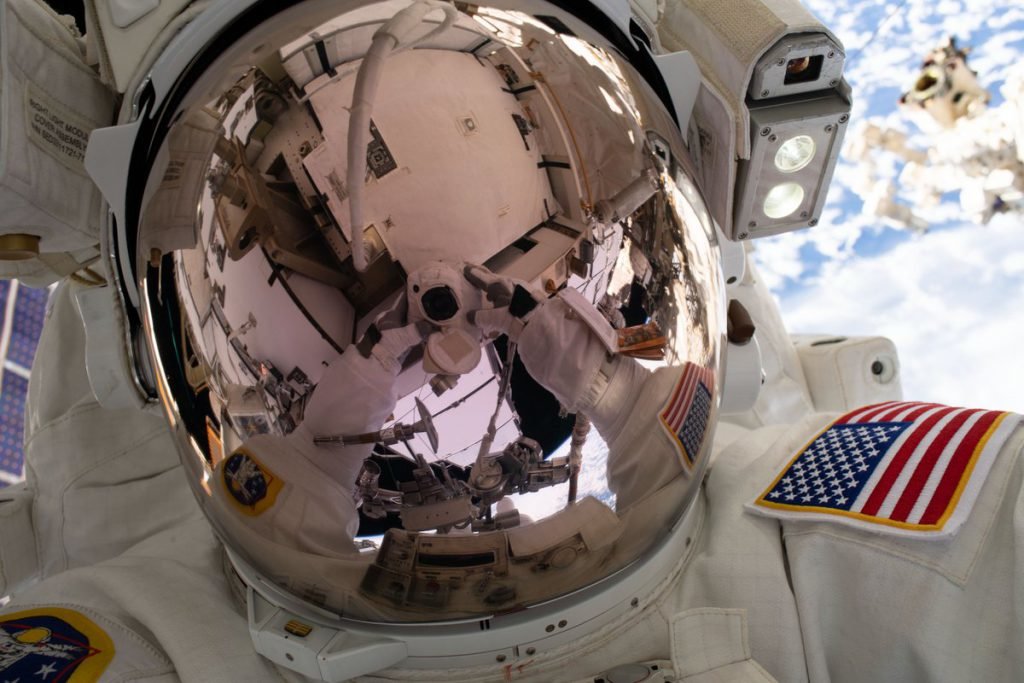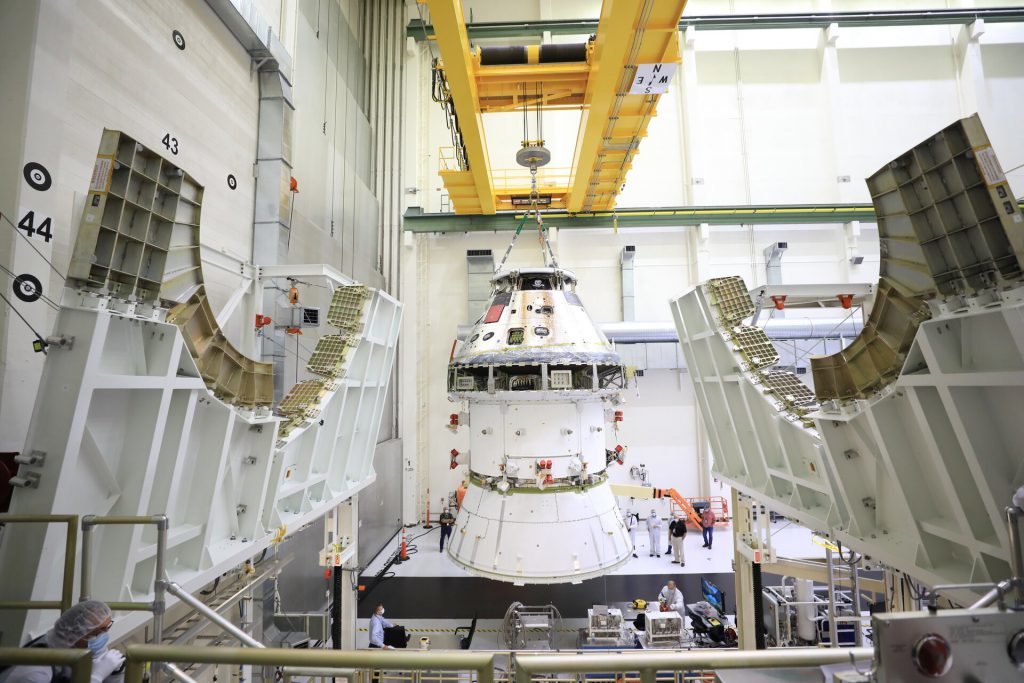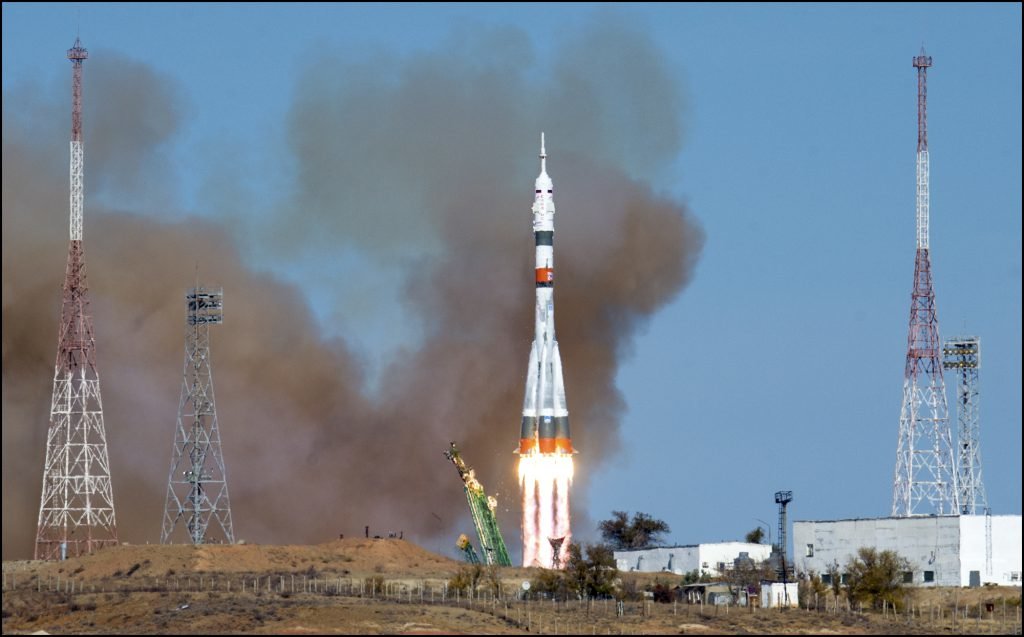On Track for Lunar Landing in 2024, NASA Signs International Accord To Prevent War for the Moon

This is an Apollo 17 Astronaut standing upon the lunar surface with the United States flag in the background. The seventh and last manned lunar landing and return to Earth mission, the Apollo 17, carrying a crew of three astronauts: Mission Commander Eugene A. Cernan; Lunar Module pilot Harrison H. Schmitt; and Command Module pilot Ronald E. Evans lifted off on December 7, 1972 from the Kennedy Space Flight Center (KSC). NASA courtesy photo via DVIDs.
If all goes according to plan, Americans will be walking on the moon once again by the time of the next presidential election in 2024 — some 52 years after the last NASA lunar landing mission, Apollo 17, took place. Within four years, NASA’s Artemis program aims to land two astronauts — “the first woman and the next man” — near the lunar South Pole and establish a sustainable human presence on and around the moon by the end of the decade.
Yet, the prospect of Americans returning to the moon comes as tensions with China and Russia are escalating to levels unseen since the Cold War, raising the prospect that enterprising American endeavors in space could be misconstrued by such so-called near-peer adversaries as acts of conquest rather than scientific advancements in the name of all mankind.
To make clear that America’s return to the moon is not a gambit for strategic military advantage over its adversaries, NASA officials announced this week that eight nations had signed an agreement outlining the terms for future lunar exploration. Known as the Artemis Accords, the landmark measures “establish a practical set of principles to guide space exploration cooperation among nations participating in the agency’s 21st century lunar exploration plans,” NASA said in an Oct. 13 release.
“Fundamentally, the Artemis Accords will help to avoid conflict in space and on Earth by strengthening mutual understanding and reducing misperceptions,” Mike Gold, NASA acting associate administrator for international and interagency relations, said in a Tuesday statement.

“Transparency, public registration, deconflicting operations — these are the principles that will preserve peace,” Gold said. “The Artemis journey is to the moon, but the destination of the accords is a peaceful and prosperous future.”
The Artemis Accords’ eight signatories comprise Australia, Canada, Italy, Japan, Luxembourg, the United Arab Emirates, the United Kingdom, and the US. Russia and China were notably absent from the list — although an American astronaut rode a Russian rocket to the International Space Station on Wednesday.
NASA officials said this week’s agreement marks a steppingstone to future bilateral agreements with other countries as the Artemis program advances beyond the initial lunar landings to more permanent exploration activities — as well as plans for follow-on missions to Mars.
“Artemis will be the broadest and most diverse international human space exploration program in history, and the Artemis Accords are the vehicle that will establish this singular global coalition,” NASA Administrator Jim Bridenstine said in Tuesday’s release. “With today’s signing, we are uniting with our partners to explore the Moon and are establishing vital principles that will create a safe, peaceful, and prosperous future in space for all of humanity to enjoy.”

The principles of the Artemis Accords include, in part: terms for the peaceful exploration of the moon; the development of interoperable systems to enhance safety and sustainability; a collective agreement to render assistance to astronauts (and cosmonauts) in distress; the public release of scientific information gleaned from moon missions; plans for the safe disposal of debris; and a commitment to preserve space heritage, such as the Apollo landing sites.
The accords also dictate that the extraction of natural resources from the moon will be done according to the 1967 Space Treaty, which is the operative treaty governing most international activity in space. Among other provisions, the Space Treaty bans the presence of nuclear weapons in orbit and prohibits sovereign claims on celestial bodies — including the moon.
“If you want to join the Artemis journey, nations must abide by the Outer Space Treaty and other norms of behavior that will lead to a more peaceful, safe and prosperous future in space exploration, not just for NASA and its partners but for all of humanity to enjoy,” Gold said during a telephonic press conference on Oct. 12.
Practice makes perfect. ??️
Inside the Vehicle Assembly Building, @NASAGroundSys technicians rehearse @NASA_SLS booster stacking using full-scale replicas. The actual booster segments will be stacked this year ahead of @NASA's first #Artemis mission: https://t.co/S5h7iiJxgy pic.twitter.com/TWZrSO1SON
— NASA's Kennedy Space Center (@NASAKennedy) September 21, 2020
More than a few plans to return Americans to the moon have fizzled over the intervening half-century since the Apollo program’s heyday. Yet this time things are different, many space experts say. Above all, the rise of the commercial spaceflight industry with companies like Elon Musk’s SpaceX and Jeff Bezos’ Blue Origin have sparked rapid-fire advancements in both technology and affordability, which have brought the moon back within reach.
Moreover, unlike Apollo, the Artemis program is not just about setting foot on the lunar surface and returning safely to Earth. Rather, NASA intends to spearhead an international coalition of partners to establish a permanent human presence on the moon. And America’s commercial spaceflight companies have their eyes on exploring the moon for valuable natural resources, which could be useful back on Earth as well as for supplying future manned missions to Mars.
NASA announced on Wednesday that the agency had awarded $370 million in contracts to 14 American companies, including several small businesses, to help develop technologies needed for the Artemis missions — and for follow-on missions to Mars.
“Together, NASA and industry are building up an array of mission-ready capabilities to support a sustainable presence on the Moon and future human missions to Mars,” Bridenstine, the NASA administrator, said in a statement.

Also on Wednesday, a Russian Soyuz-2.1a rocket lifted off from the Baikonur Cosmodrome in southern Kazakhstan (the launch site for the Soviet Union’s manned spacecraft program), carrying NASA astronaut Kate Rubins and two Russian cosmonauts to the International Space Station.
NASA reportedly paid $90.25 million for Rubins’ seat on the Russian rocket, even though SpaceX’s Crew Dragon spacecraft successfully launched two American astronauts to the ISS in June, marking the resumption of NASA manned spaceflight missions following a nine-year hiatus after the last space shuttle mission in 2011.
The next SpaceX manned mission, known as Crew-1, is scheduled to launch a crew made up of three NASA astronauts and one from Japan to the ISS next month. Boeing’s CST-100 Starliner is scheduled to routinely transport astronauts to the ISS by the end of 2021.

BRCC and Bad Moon Print Press team up for an exclusive, limited-edition T-shirt design!
BRCC partners with Team Room Design for an exclusive T-shirt release!
Thirty Seconds Out has partnered with BRCC for an exclusive shirt design invoking the God of Winter.
Lucas O'Hara of Grizzly Forge has teamed up with BRCC for a badass, exclusive Shirt Club T-shirt design featuring his most popular knife and tiomahawk.
Coffee or Die sits down with one of the graphic designers behind Black Rifle Coffee's signature look and vibe.
Biden will award the Medal of Honor to a Vietnam War Army helicopter pilot who risked his life to save a reconnaissance team from almost certain death.
Ever wonder how much Jack Mandaville would f*ck sh*t up if he went back in time? The American Revolution didn't even see him coming.
A nearly 200-year-old West Point time capsule that at first appeared to yield little more than dust contains hidden treasure, the US Military Academy said.












